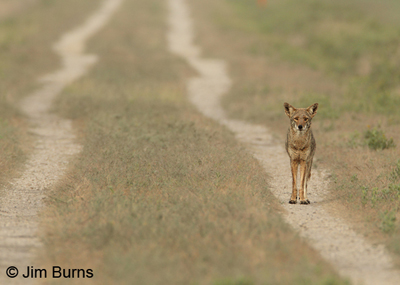
Coyotes get a bad rap even though they don’t have a bad rep like, say, wolves or wolverines.
The coyote comes up out of the wash, maybe forty yards down the jeep trace, stops dead center, and gives us that look—this is my planet, you’re just visiting, I see your kind every day, I’m not worried but maybe you should be. We freeze and watch. It looks disinterestedly over one shoulder, glances back at us to affirm that we’ve gotten the message, then meanders up through the desert scrub, pausing here and there to sniff the identities of the passersby of the previous night.
It is just sunup, but the morning is already warm in the way desert nights hold heat in the monsoon’s humidity. The coyote is obviously hunting, zigging around fallen Saguaros, zagging through the brush, alert for breakfast possibilities in that nonchalant and laconic manner so typical of its tribe. We haven’t moved, enjoying the ‘song dog’ show we’ve watched so many times, never tiring of it.
As the coyote trends up a hill and slips beneath the low hanging branches of a small mesquite, an episode we’ve never seen before begins to unfold. We see the wing flash first, and we see the coyote slip slide and duck. The mockingbird swoops up, then drops again. The action is too far away for us to hear, but we know well the antagonist’s attack song, as does every feral cat that has ever wandered into the springtime territory of a mockingbird—that buzz, low but strident, that will ring in the interloper’s ear until it is out of harassment’s reach.
The coyote drops into a wash. The mockingbird lights in a mesquite. The coyote comes up out of the wash. The mockingbird is on it again, wings flashing, beak outstretched, legs dangling, raking, lifting, strafing again. The coyote never breaks into its iconic lope, never turns to confront, never even deigns to look up at its avian tormentor. The assault breaks off, then resumes as the coyote continues toward the ridge, sometimes under cover, sometimes across open ground. Undoubtedly this is a game they’ve both played many times, but instinct always trumps familiarity.
Silhouetted now against the horizon of the ridgeline, the coyote has crossed some barrier invisible to us, and the mockingbird retreats back downslope, perhaps to nestlings, its pugnacious reputation upheld. Northern Mockingbirds are a delight to all except those kept awake on early summer nights by unmated males’ plaintive, incessant songs. Coyotes are a delight to all who glimpse in its tenacious survival along the seams of civilization a reminder of a time before civilization merited that name.
We’ve been privileged over the years to watch two other avian species, Great Horned Owl and Short-eared Owl, attack Coyotes on sight and escort them away from nests. We’ve been amused over the years to observe our own species’ unavailing efforts to control coyote numbers and coyote behavior. We think we’ve come a long way, but coyotes have come right along with us, wily survivors lurking along the edges of our long and mutual journey.